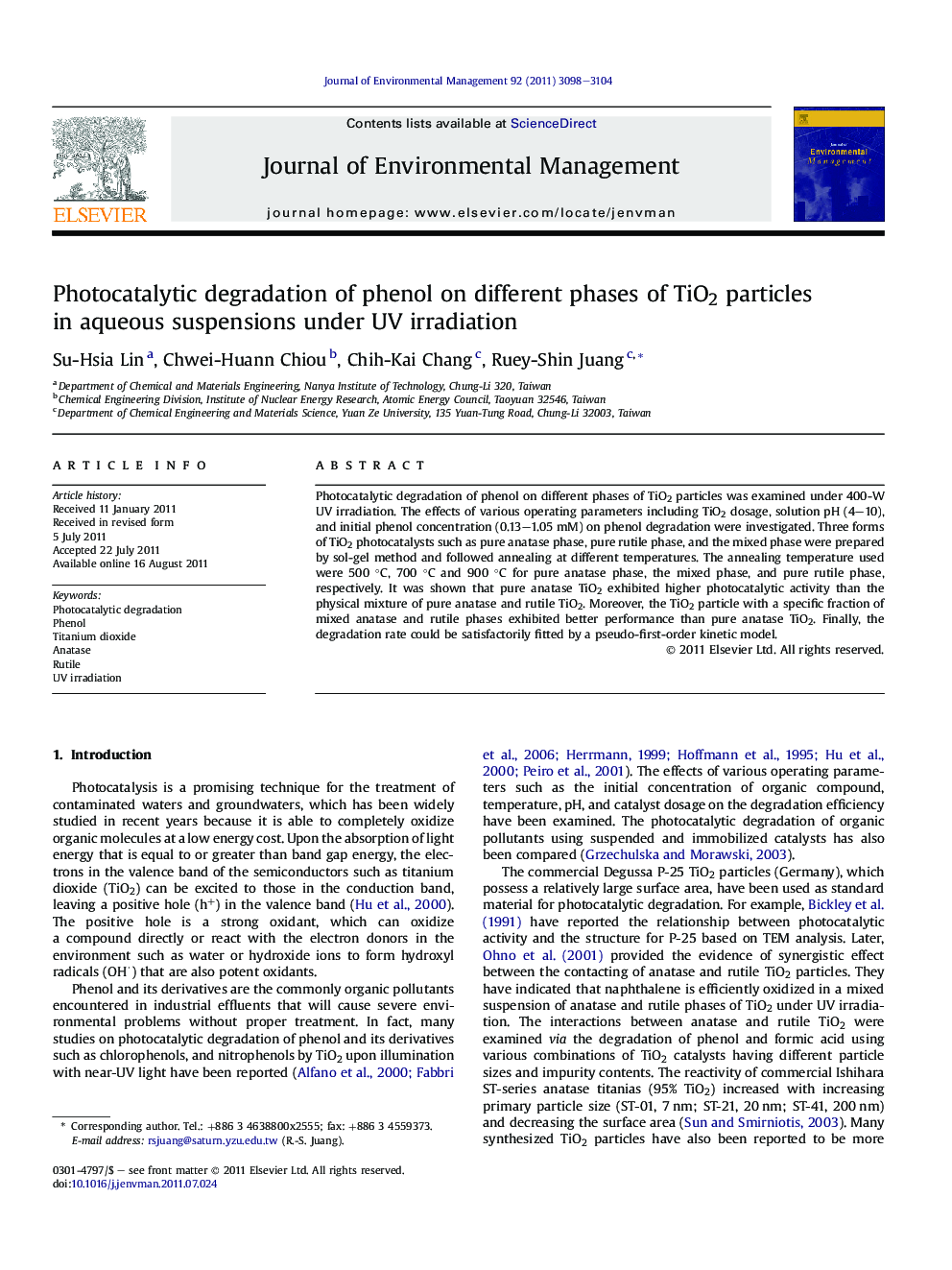| Article ID | Journal | Published Year | Pages | File Type |
|---|---|---|---|---|
| 1057113 | Journal of Environmental Management | 2011 | 7 Pages |
Photocatalytic degradation of phenol on different phases of TiO2 particles was examined under 400-W UV irradiation. The effects of various operating parameters including TiO2 dosage, solution pH (4–10), and initial phenol concentration (0.13–1.05 mM) on phenol degradation were investigated. Three forms of TiO2 photocatalysts such as pure anatase phase, pure rutile phase, and the mixed phase were prepared by sol-gel method and followed annealing at different temperatures. The annealing temperature used were 500 °C, 700 °C and 900 °C for pure anatase phase, the mixed phase, and pure rutile phase, respectively. It was shown that pure anatase TiO2 exhibited higher photocatalytic activity than the physical mixture of pure anatase and rutile TiO2. Moreover, the TiO2 particle with a specific fraction of mixed anatase and rutile phases exhibited better performance than pure anatase TiO2. Finally, the degradation rate could be satisfactorily fitted by a pseudo-first-order kinetic model.
► Using a sol-gel method, annealing at 500 °C would give TiO2 particles with anatase phase whereas annealing at 900 °C yielded TiO2 particles with rutile phase. ► There was no synergistic effect found for phenol degradation when the mixtures of anatase and rutile phase TiO2 particles were used. ► The photodegradation of phenol as catalyzed by TiO2 particles followed a pseudo-first-order kinetics. ► The optimal pH for phenol degradation could be determined, which depends on the acid-base properties of TiO2 particles and the acid dissociation constant of phenol.
